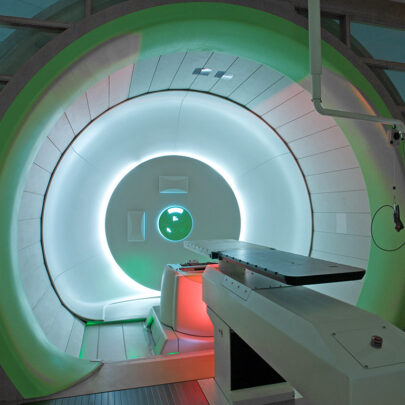Study Finds Fewer Severe Side Effects After Combined Therapy vs. Conventional Radiation
January 15, 2020
A comparative study of severe side effects of anti-cancer proton beam therapy versus conventional x-ray (photon beam) radiation therapy when either is combined with chemotherapy has found the proton treatment lowered the risk of severe side effects potentially requiring hospitalization by two-thirds.
A reduction of such large size in severe side effects associated with any kind of major medical treatment is generally recognized as an substantial effect.
Published in JAMA Oncology on December 26, 2019, the study is entitled “Comparative Effectiveness of Proton vs Photon Therapy as Part of Concurrent Chemoradiotherapy for Locally Advanced Cancer.”
Proton vs. photon
Conducted by a team of University of Pennsylvania oncology specialists, the work analyzed grade 3 adverse effects–typically severe effects requiring hospitalization or emergency department visits–experienced by 1,483 patients undergoing combined chemotherapy and radiotherapy, a treatment approach often used for more advanced cancers. The radiation for one group in the study was proton radiation; for the other, photon radiation.
Both types of radiation destroy cancer cells. Cancer researchers have hoped that the lower scatter radiation associated with proton beam therapy, compared with photon radiation, could lessen the harmful effects of combined chemotherapy and radiation. However, no study to date has shown such a reduction in harm.
Unplanned hospitalizations
The research focused on severe side effects experienced by patients in both groups during the 90 days after their treatment ended, including unplanned hospitalizations. Researchers found that proton therapy was associated with a two-thirds reduction in post-treatment adverse incidents. Meanwhile, there was no difference in the curative effects or overall survival for patients who received either proton or photon radiation.
Proton therapy has been controversial since its introduction over three decades ago because its costs are significantly higher than conventional X-ray therapy, even as the curative outcomes of both therapies are about the same. Some major insurance carriers decline to approve proton radiation therapy as an alternative to X-ray radiation therapy because of those higher prices.
Led by Brian Baumann, MD, Adjunct Assistant Professor of Radiation Oncology in the Abramson Cancer Center at the University of Pennsylvania, the study team also included four affiliated faculty members of the Penn Center for Cancer Care Innovation: James Metz, MD, Justin Bekelman, MD, Peter Gabriel, MD, MSE, and Nandita Mitra, PhD.
The preliminary findings of the study were first presented at the 2019 American Society of Clinical Ongology Annual Meeting in Chicago.
